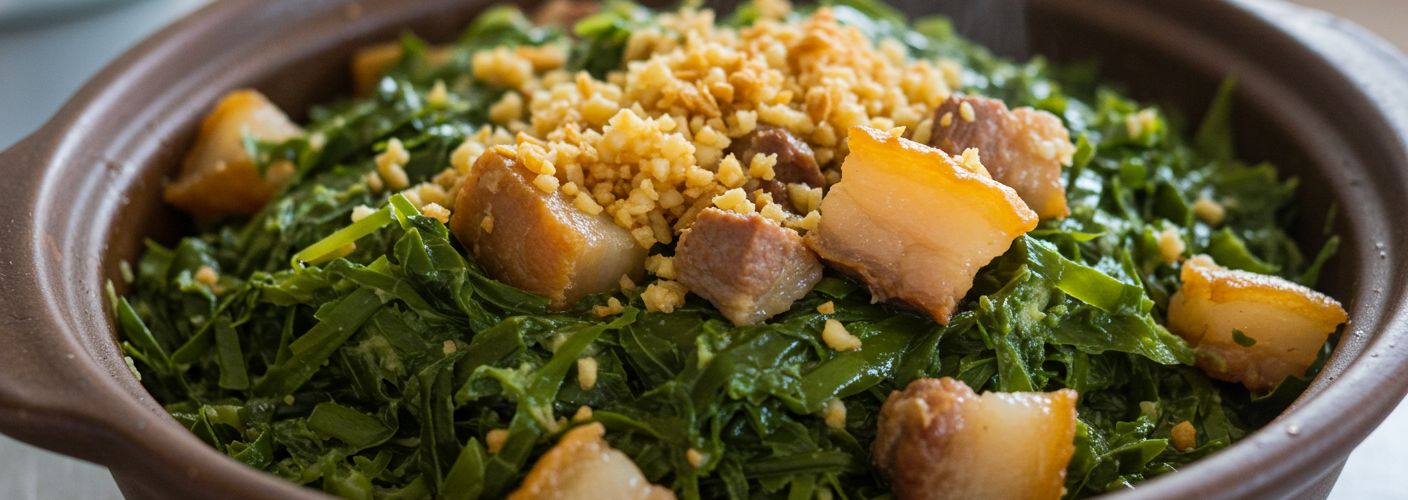Malagasy cuisine is a treasure trove of flavors and traditions, with dishes that evoke the spirit of its vibrant culture. Among these culinary delights, one dish stands out for its rich taste and historical significance: Malagasy Ravitoto. This beloved meal, centered around pounded cassava leaves, epitomizes the heartiness and simplicity of Madagascar’s food culture.
What is Malagasy Ravitoto?
At its core, Ravitoto is made from cassava leaves that are pounded into a fine paste. Known locally as “ravitoto,” these leaves are typically obtained from the cassava plant, a staple in the diets of many Madagascan communities. The preparation of Ravitoto is steeped in tradition. Once the leaves are harvested, they are washed thoroughly before being crushed and pounded, a task often done by hand in a mortar and pestle.
The pounded cassava leaves are then slow-cooked, typically with garlic and pieces of fatty pork, which enhances the dish’s flavor profile. The combination of the earthy, slightly bitter cassava leaves with the rich, savory pork creates a dish that is hearty and comforting. Garlic adds an aromatic quality, rounding out the flavors for a balanced and satisfying meal.
Cultural Significance
Malagasy Ravitoto is more than just a dish; it represents a communal way of living. The preparation often involves family gatherings, where the process of pounding the leaves becomes a shared activity filled with laughter and stories. This tradition not only fosters connections among family members but also passes down culinary skills and the appreciation for their rich heritage to younger generations.
Ravitoto is usually served with rice, which is a staple in Malagasy cuisine. The rice acts as a neutral base that perfectly complements the intensity of the Ravitoto. In many households, this dish is not just typical everyday fare but often graces the table during celebrations and special occasions, signifying its importance in Malagasy culture.
Health Benefits
Aside from its cultural significance and delightful flavors, Ravitoto is packed with nutritional benefits. Cassava leaves are rich in vitamins A and C, calcium, and iron, making them an excellent choice for a nutritious meal. The addition of pork provides protein and healthy fats, which together create a dish that is both satisfying and nourishing.
Cooking Ravitoto at Home
For those interested in trying their hand at making Malagasy Ravitoto, the process is relatively simple but requires some time and patience. Start by sourcing fresh cassava leaves from a local market or grocery store. If fresh leaves aren’t available, frozen cassava leaves can also work.
- Begin by thoroughly washing the leaves to remove any dirt.
- Pound the leaves until they reach a fine consistency. If you’re using a food processor, pulse them until they mimic the traditional texture.
- In a large pot, sauté minced garlic in a bit of oil until fragrant.
- Add the pork, searing it until it’s golden brown.
- Stir in the pounded cassava leaves and enough water to cover the mixture. Allow it to simmer for at least an hour, letting all the flavors meld together.
Serve your Ravitoto with a generous side of hot rice, and enjoy the taste of Madagascar in the comfort of your home.
In conclusion, Malagasy Ravitoto showcases the rich culinary heritage of Madagascar, combining simplicity with profound flavor. Its preparation is a celebration of community, making it a dish that nourishes both the body and the spirit. Whether enjoyed at a family gathering or as a comforting meal at home, Ravitoto is a delicious tribute to the island’s culture and traditions.




Add comment